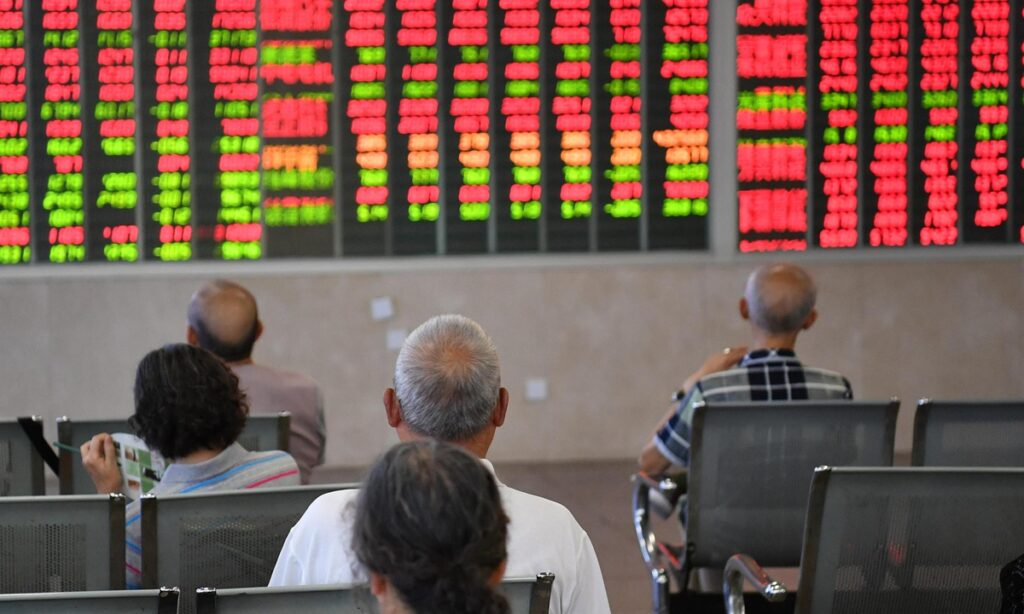Since the onset of across-the-board registration-based IPO system half a year ago, China’s capital market has gained continuous optimization in terms of regulation environment and IPO quality, basically meeting the goal of better supporting the real economy, experts told the Global Times.
As of Wednesday, there are 205 newly added firms listed in domestic A-share market, raising a total of 267.2 billion yuan ($36.58 billion), with the two boards – the STAR market, known as China’s NASDAQ-style sci-tech innovation board and the ChiNext board – attracting nearly 80 percent of the financing.
In terms of industry categories, firms in electronics and machinery took a lion’s share.
“The IPO structure and trend after the rollout of the registration-based IPO system shows that more firms in high-tech field are being supported in the financial market, which is in line with the goal that the IPO system should better serve technology innovation and the real economy,” Yang Delong, chief economist at Shenzhen-based First Seafront Fund Management Co, told the Global Times on Thursday.
After the new institutional arrangement took effect, the pace of IPO and refinancing has slowed down a bit compared with last year, and quite a number of firms chose to pull back their IPO applications under strict regulatory rules, including standard information disclosure.
“As seen from the pace of fundraising, requirements on applicants under the registration-based IPO system are not eased, which the market was concerned about previously. On the contrary, the overhaul has tightened the rules,” said Yang.
According to China’s Capital Week magazine, in the first half of the year, among the companies that failed to list on the A-share market, the review and inquiry focused more on growth and core technology competitiveness. Their fundraising projects, sector positioning, internal financial control and research and development investment were also frequently looked into.
With the regulatory rules putting more emphasis on law and market under the full implementation of the registration-based IPO system, the brokerage personnel are also facing higher requirements.
In the first half of the year, the China Securities Regulatory Commission (CSRC), the country’s securities watchdog, issued 181 tickets, with the total fines and confiscations amounting to 2.4 billion yuan, nearly reaching the level of the full year in 2022.
Dong Shaopeng, a senior research fellow at the Chongyang Institute for Financial Studies at the Renmin University of China, told the Global Times on Thursday that “the current information disclosure work still has room to improve,” while calling for all parties to ramp up efforts in this regard.
China officially launched its across-the-board registration-based IPO system in February, marking a milestone in the reform of the country’s capital market. The institutional arrangement allows the market to make a choice under tightened market and legal constraints, which is different from the previous approval system.
Under the registration-based IPO system, rules involve simplifying listing requirements, optimizing registration procedures, improving the regulations on underwriting and on major asset restructuring of listed firms, strengthening oversight and law enforcement, and stepping up the protection of investors, according to the CSRC.
Initiated in 2018, the registration-based system was adopted by the STAR board, the ChiNext board and the Beijing Stock Exchange, and then came into full implementation across all boards.
During the two-day conference in July, the CSRC said that it will deepen reforms and push forward the opening-up of the capital market, including the deepening of the reform of the registration-based system, and the reform of the investment end.
“Promoting reforms on the investment side will help remove the bottlenecks in long-term capital entering the market. And introducing long-term capital in a vigorous way could be a source of fresh water, boosting prosperity of the Chinese stock market,” said Li Daxiao, chief economist at Shenzhen-based Yingda Securities.
Currently, it is imminent to bolster investor confidence and expectations for the recovery momentum of the world’s second-largest economy, Yang said, adding that it is important to implement a basket of stimulus measures rolled out by the central government in concentrated efforts since last month.
Meanwhile, Yang also called for ramping up support from the monetary and fiscal policies to stabilize economic growth.
The move by the People’s Bank of China on Tuesday – reducing the rate on medium-term lending facility by 15 basis points to 2.5 percent and lowering the seven-day reverse repurchase rate by 10 basis points to 1.8 percent – has spurred wide market expectations for a broader monetary policy support, including possible cuts to interest rates and the reserve requirement ratio, in a bid to boost economic growth in the second half of 2023.
Despite the northbound capital – overseas money flowing into China’s A-share market through the Hong Kong Special Administrative Region – has shown a net outflow for a ninth consecutive day as of Thursday, Yang said it is a “phased thing.”
“In the long run, it is a net inflow trend betting on the hopes of China’s economic potential and resilience,” he said.
Net inflow of northbound capital exceeded 180 billion yuan in the first half of 2023, up 155.33 percent year-on-year, according to data from financial outlet Wind.
(Global Times)




